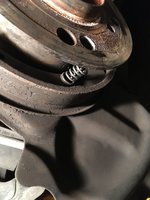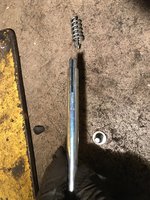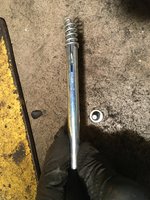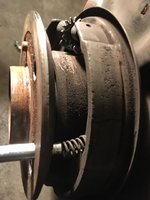I am planning to do rear shoes on both E420s. I pulled the rear tire and rotor off and noticed that I need a tool to compress the spring that retains the shoes. Actually there are two tools. The spring compressor is 112 589 09 61 00 ($41.40) and the spring hook 116 589 01 62 00 ($12.00). I decided to delay this job until I have the tools. With the recent announcement of extensive delays at Naperville, I think this job is going to have to wait for quite some time. Hopefully, with the tools this job will be pretty straight forward. I did this on my 400E back in 1998 but I have zero recollection of how I managed to do it without the tools. Anyone have a picture of the brake spring compressor tool?
-
Hi Guest !
Welcome to the 500Eboard forum.
Since its founding in late 2008, 500Eboard has become the leading resource on the Internet for all things related to the Mercedes-Benz 500E and E500. In recent years, we have also expanded to include the 400E and E420 models, which are directly related to the 500E/E500.
We invite you to browse and take advantage of the information and resources here on the site. If you find helpful information, please register for full membership, and you'll find even more resources available. Feel free to ask questions, and make liberal use of the "Search" function to find answers.
We hope you will become an active contributor to the community!
Sincerely,
500Eboard Management
Rear Brake Shoe Tools
- Thread starter emerydc8
- Start date



















